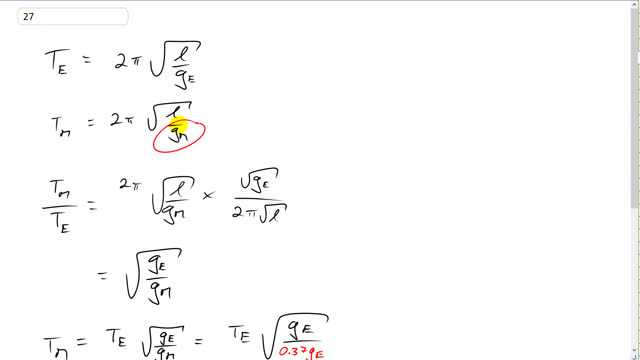
A pendulum has a period of 1.85 s on Earth. What is its period on Mars, where the acceleration of gravity is about 0.37 that on Earth?

In order to watch this solution you need to have a subscription.
This is Giancoli Answers with Mr. Dychko. The period of the pendulum on earth is 2π times the square root of its length divided by the acceleration due to gravity on earth. And on the moon it's the same stuff except you have acceleration of gravity of the moon. And when we take the ratio of these 2 periods. So, you take a period on the moon divided by period on earth, you have the period of the moon and then multiplied by the reciprocal of a period on the earth instead of dividing by this thing multiplied by its reciprocal. So that means multiplying by A square root gE divided by 2π square root l and the 2π's and the square root l's cancel leaving us with square root gE over square root gm which you can write as a single square root of the ratio. So, multiply both sides by TE this is Tm over TE here. And we're multiplying both sides by period in the earth. And then you end up with period in the moon is period in the earth times the square root of gE over gm. But on the moon, acceleration due to gravity is 0.37 times that of the earth. And then ya substitute that in gE's cancel. And we're left with period on the moon is period on earth times the square root of 1 over 0.37 which is 1.85 seconds period on earth divided by or times by square root 1 over 0.37 which is 3.0 seconds will be the period on the moon.